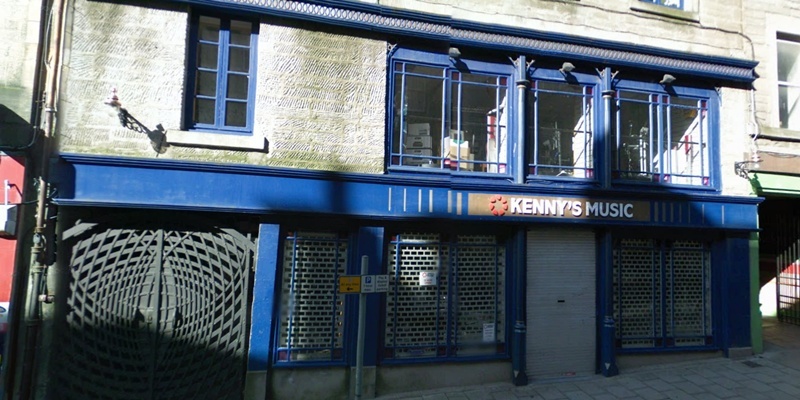A Dundee music shop boasts “hard rock” of a very different kind the only visible remains of one of the city’s most historic and enigmatic structures.
The ramparts of Dundee Castle laid siege by William Wallace and destroyed by Robert the Bruce in 1312 are part of the furniture for staff at Kenny’s Music in Castle Street.
Shop manager Drew Innes (35) said the stone ramparts even draw parties of tourists keen to see what is left of a key building from Scotland’s War of Independence.
Drew said, “That is pretty strange, but I suppose it’s understandable given that it does seem to be all that’s left of it. Historic Scotland occasionally come down as well to keep an eye on it.”
Local historians say the ramparts formed the west corner of the castle and that they ran along to what is now Seagate.
Drew said, “When I first heard about it I was surprised, because I didn’t even know there had been a castle in Dundee. When I first saw it, it wasn’t exactly what I would have pictured in my head as ramparts, as they are very rough looking.
“It feels good to be the guardian of it, but the castle is still quite a mystery.”
It is not known when the castle was built, but it fell into English rule in 1296 and was laid siege by Wallace and Alexander Scrymgeour the following year. After changing hands between the Scots and the English many times, it was destroyed by Robert the Bruce in 1312.
As well as the ramparts, the shop’s basement appears to be a virtual treasure trove of Dundee history throughout the ages.BeatlesDrew said, “When the Beatles played in Dundee in the 60s, the back of the Caird Hall was absolutely mobbed with fans and they couldn’t get near it.
“This used to be an ironmongers, so they sneaked them into the shop and down the stairs. There’s a fire door that goes through to the fire exit of the Caird Hall, so they sneaked them in this way.
“There are also what looks like window bays from when the city’s street level was much lower than it is now.”
Dundee City Council archivist Iain Flett said the ramparts were the remains of a key Scottish building.
“Basements on the left hand side of Castle Street have rock that extends at a 45-degree angle to the road and that is the castle rock of Dundee,” he said.
“It was certainly supplied by ship and we assume that somewhere at the back of Exchange Street there was a jetty.”
You can watch an interview with Kenny and a tour of the shop’s basement at www.dundeechannel.com
Photo from Google Maps.
